A couple weeks back, Lexus invited me to Austin, Texas, where I was able to drive the new third-generation Lexus IS in all its various forms. The following is my personal impression of the cars — a more technical overview of the new model was posted last week.
Earlier this year at the Detroit Auto Show, Lexus introduced a new third-generation IS that takes the brand’s new Spindle Grille styling and turns it up to eleven — in its final form, the IS almost looks like a concept car with its massive mesh grille and bold body creases.
Even so, it’s not just the styling that’s been in the spotlight, as IS Chief Engineer Junichi Furuyama has explained that the central goal during development was to make the IS “fun to drive” — here’s a quote from a Lexus Magazine interview I did with Furuyama-san:
At the first stage of development, we focused exclusively on creating a fun-to-drive car. For that purpose, we almost decided to forget about everything else.
No doubt about it, Lexus is rolling the dice with the new IS — I travelled to Austin, Texas, for a global press event to see how the gamble paid off.
Driving
The day started off at Driveway Austin, a three-mile driver development track that incorporates twists and turns from some of the world’s most famous courses — it made for the perfect environment to test the new IS against its predecessor and some of the competition, namely the BMW 335i M SPORT and the Mercedes C350.
Partnering up with Joaquin Ruhi from My.IS, the two of us ran the full gamut of vehicles — let’s get the impressions of the two competitors out of the way first:
- The 335i’s turbo inline six engine is very impressive — on the other hand, the IS 350 F SPORT compared very well with the BMW in the corners.
- On the opposite side of the spectrum, the Mercedes was completely outclassed by every other vehicle present — plodding, heavy, and ill-suited for the track.
As fun as it was to drive the two German sedans, comparing the outgoing and incoming IS 350 F SPORT that was the most revealing — the two models are clearly related and share the same general personality, but the new IS F SPORT is a much more evolved machine.
Simply put, the driving experience of the new IS F SPORT is in another league when compared to the outgoing model — steering is sharper and more predictable, the weight of the car shifts easily and is less prone to twitchiness in the corners, and the newly redesigned seats and steering wheel are miles ahead for locking in the driver comfortably.
After the go-go-go morning at the track, the rest of the day was spent driving around Austin at a much more reasonable speed. Over the course of the afternoon, I drove the IS 250, IS 250 AWD, IS 350 AWD, and the IS 350 F SPORT — all models exhibited the qualities expected from a Lexus, serene & comfortable, smoothing out the bumps of the roads and providing an altogether enjoyable experience.
Exterior
There’s no way to talk about the exterior of the IS without jumping straight to the spindle grille — let’s compare and contrast between the standard & F SPORT models:
It’s all about perspective — put side-by-side, the standard model looks downright respectable and buttoned up, but either grille could stand as the most dramatic interpretation of the Spindle Grille yet.
Of course, it’s not just the zig-zag mesh that gives the F SPORT its look — the deeper creases and the air intakes all add up to a very aggressive face.
All IS models share the same side profile:
Much has been made of the swoosh that travels through the rear wheel up to the taillights, but it’s the huge wheel arches that give the IS side profile a lot of its character:
With the back of the IS, I’m not so sure about the duck-tail shape of the trunk, but the reverse spindle grille shape that incorporates the taillights makes for some nice lines:
Still, the “Devil Horn” light reflectors might be my favorite exterior design detail:
Interior
There’s a lot of things to like about the interior of the third-gen IS, starting with the new steering wheel design:
Not only does it feel solid in hand, the steering wheel buttons have a nice click to them, and provide access to the new multifunction display — I shot a quick video demonstration of the standard IS instrument panel:
Jump over to the IS F SPORT and there’s the LFA-inspired circular dial:
It would be easy to write this hybrid mechanical/digital interface off as a gimmick, but it’s extremely satisfying to use — navigate through the options while driving, and it feels like you’re flying a spaceship.
The other futuristic interior element is the electrostatic temperature controls — here’s a video showing how it works:
It took a couple minutes to get used to the sensitivity of the controls, but with increased familiarity, it’s an excellent replacement for the traditional push-button temperature adjustment.
The navigation display does feel small in the dash, but being able to customize the HOME screen is a huge upgrade — here’s a video of me using the software for the first time:
Materials in the new IS are comparable to the current model — that said, there is a lack of color outside of the Roja Red IS F SPORT interior color, making the cabin seem smaller than it really is.
Final Thoughts
So was the third-generation IS a successful gamble by Lexus? It all comes down to two bets: design & performance.
The design of the IS F SPORT face is a polarizing move, but Lexus balances it out with a (slightly) subdued standard grille — the rest of the vehicle is handsome, and the new interior really set it apart from the competition. All in all, the design works for me.
As for performance — while I’m reluctant to make the comparison, the new IS inspires confidence on the track much like the LFA. Where the BMW 335i feels focused on the machine itself, the new IS augments the driver’s ability. No question in my mind, the IS is a seriously fun car to drive.
This ends my initial impressions of the 2014 Lexus IS, though I still have some photos to publish. Special thanks to Lexus for the invitation and their hospitality during my trip to Austin.


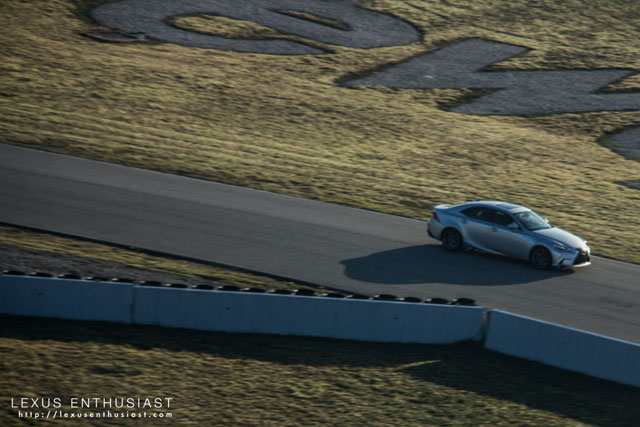
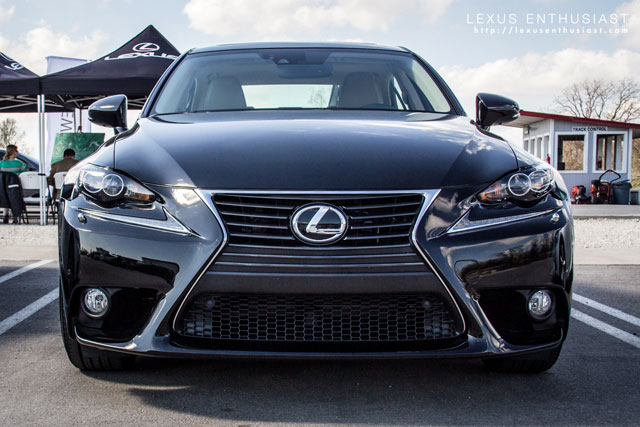
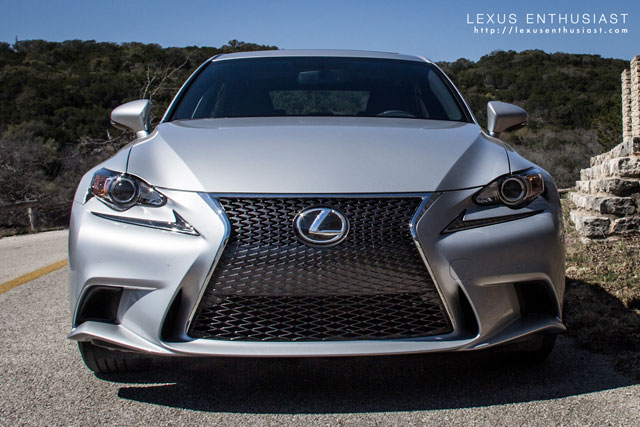
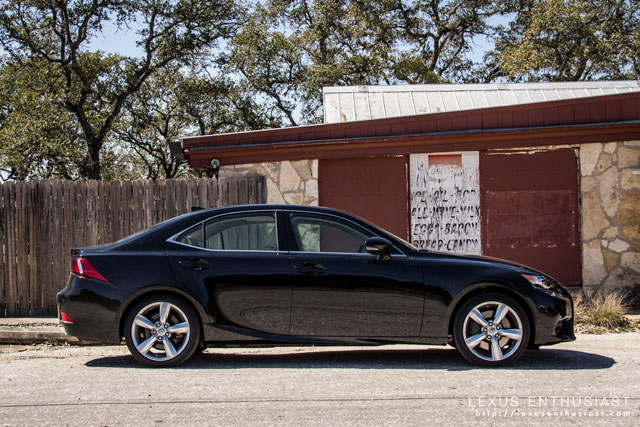
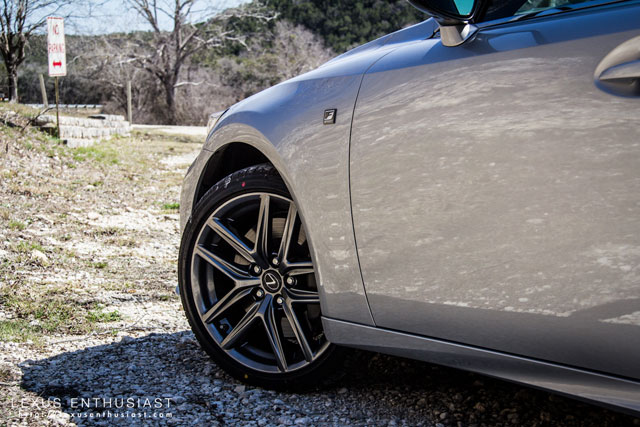
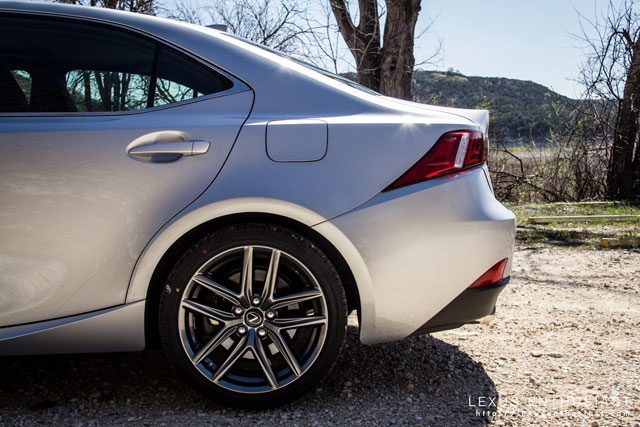
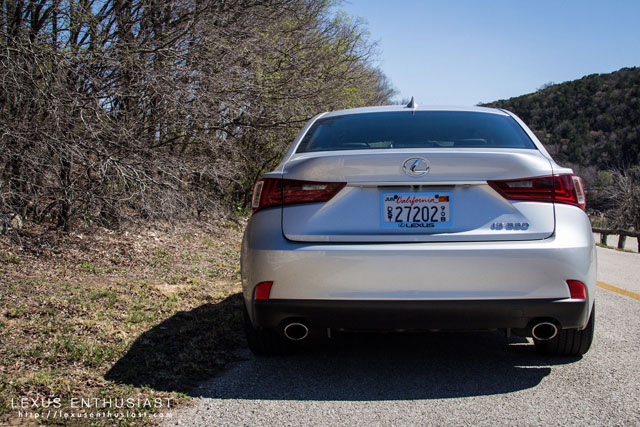

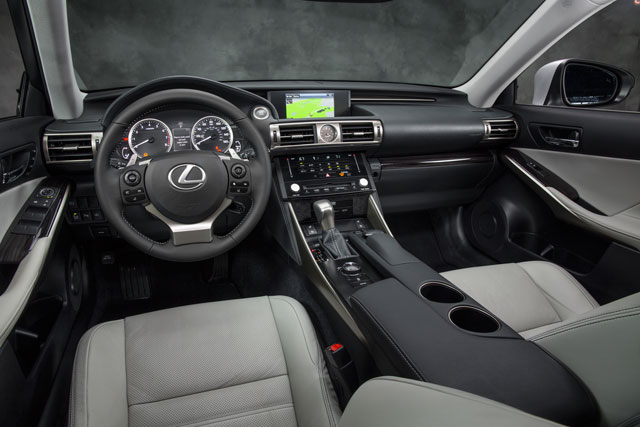
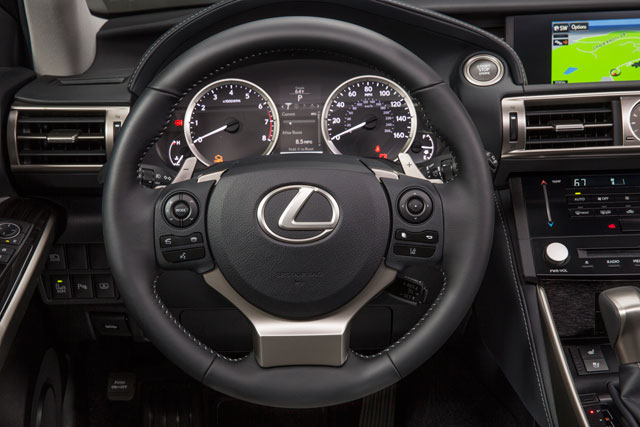
Comments